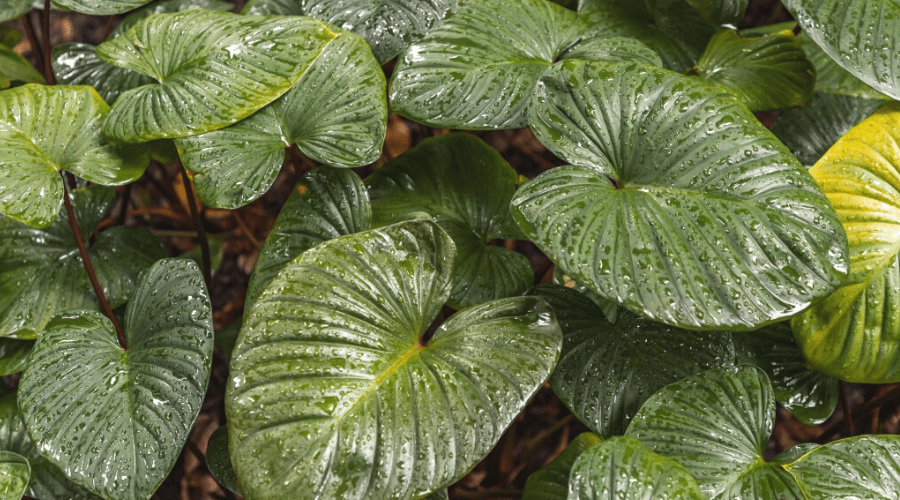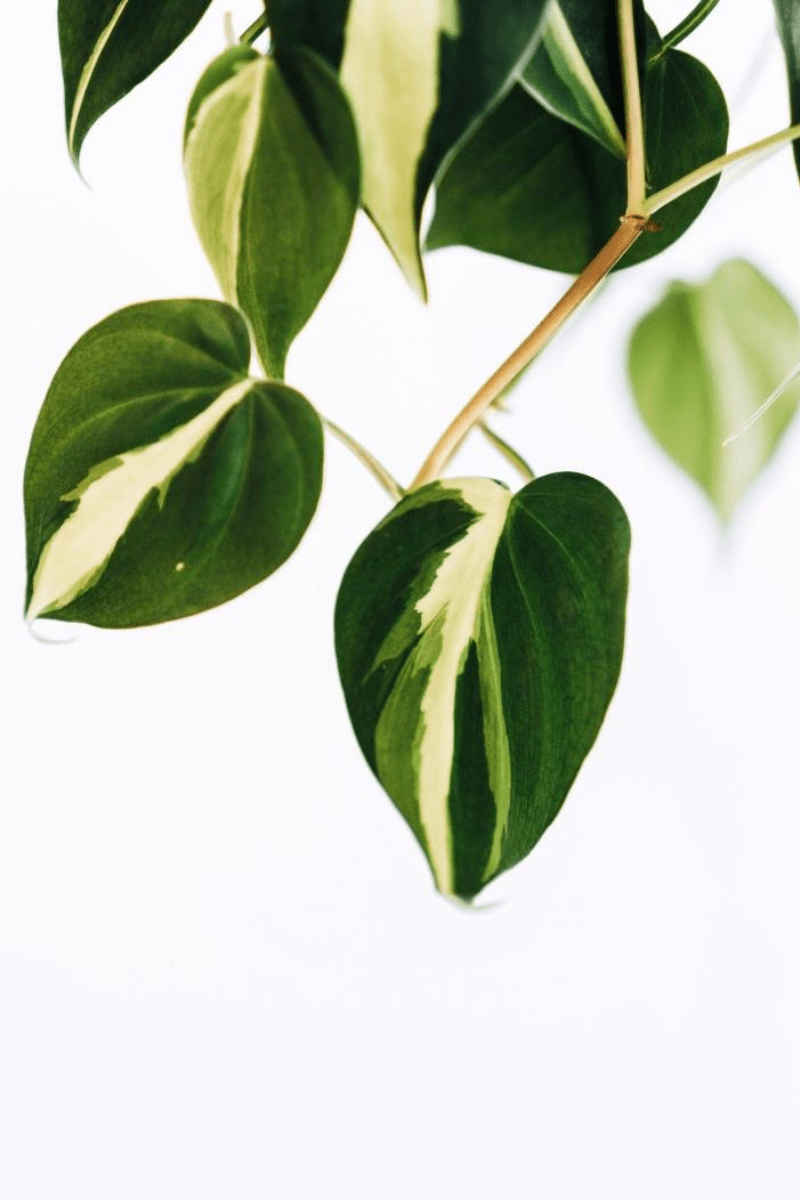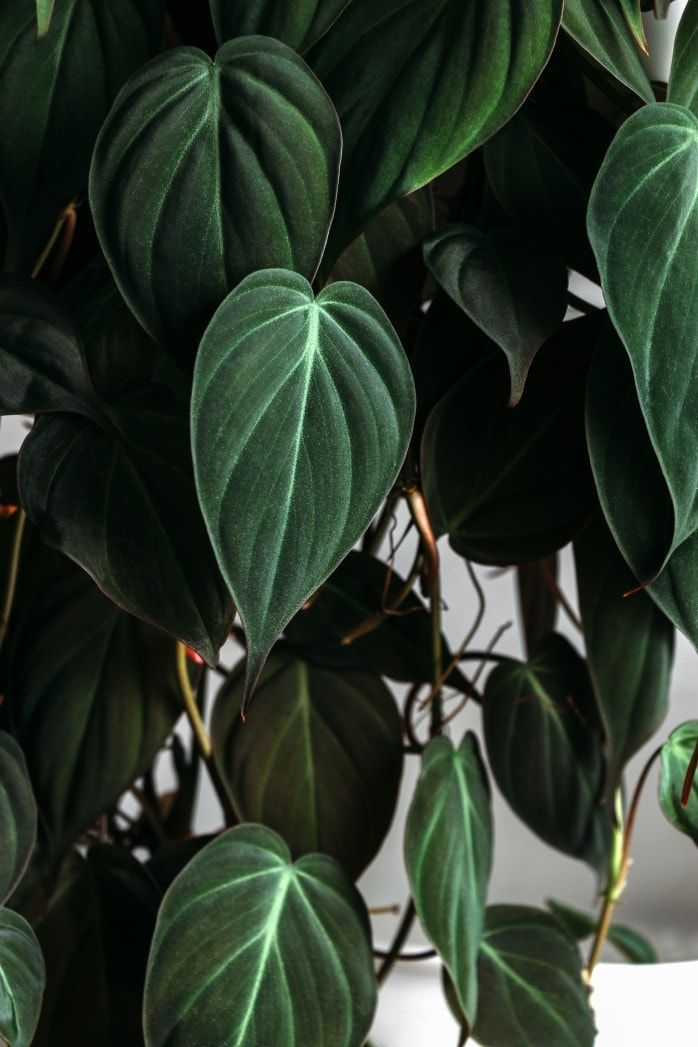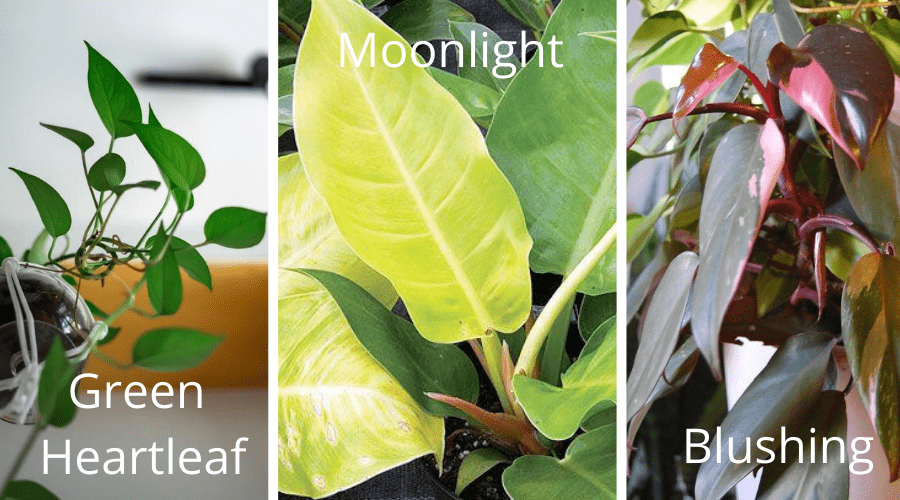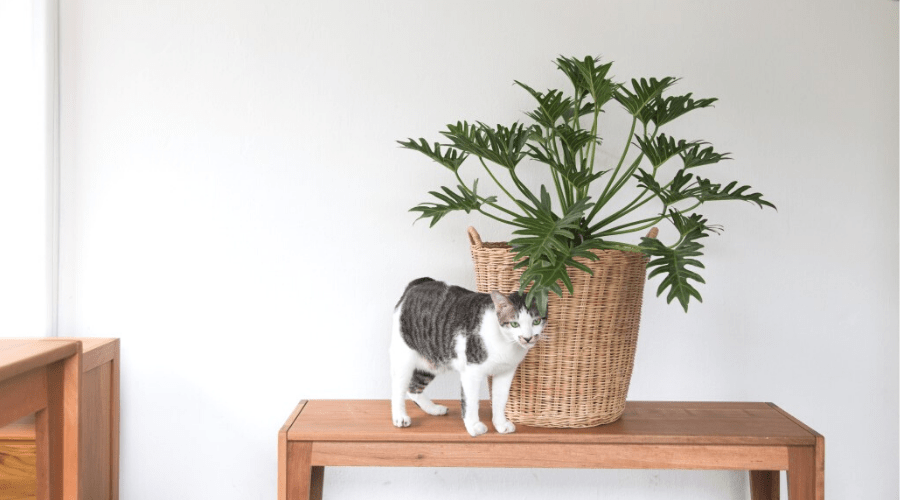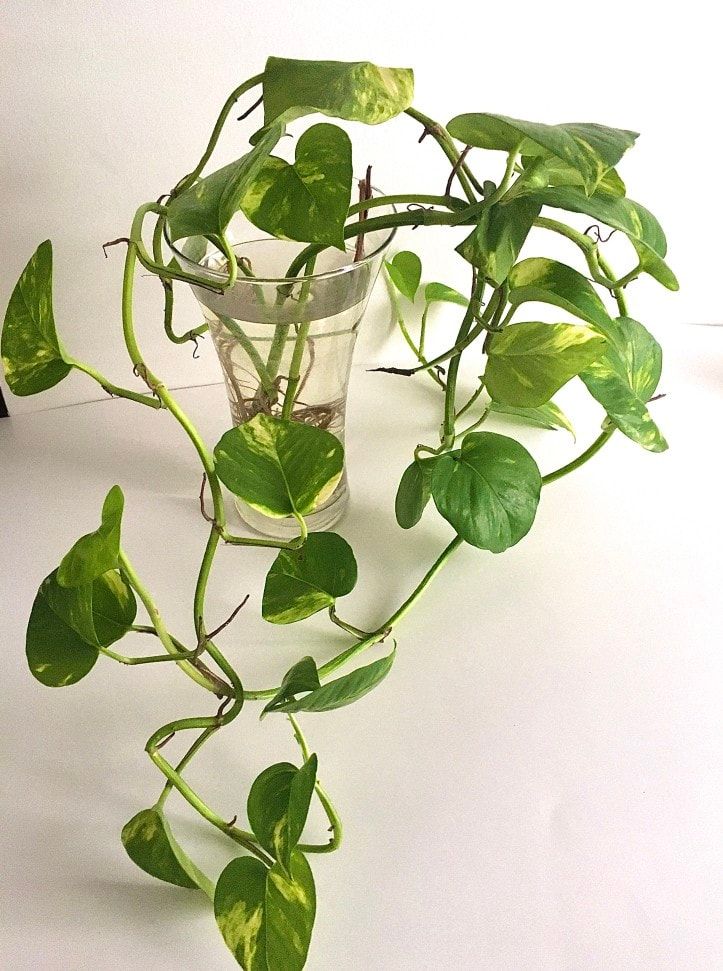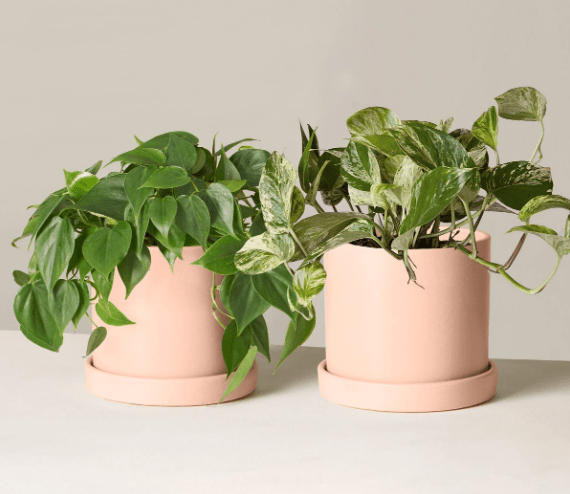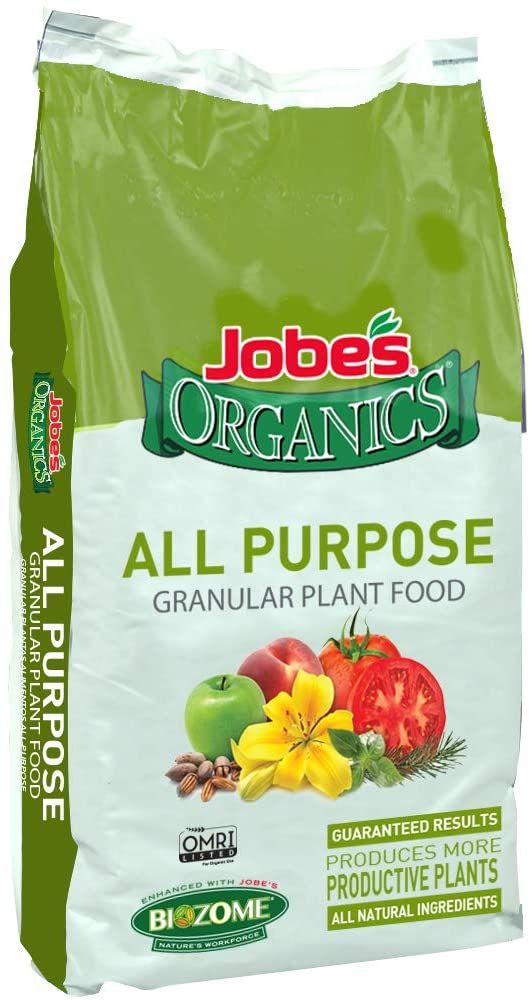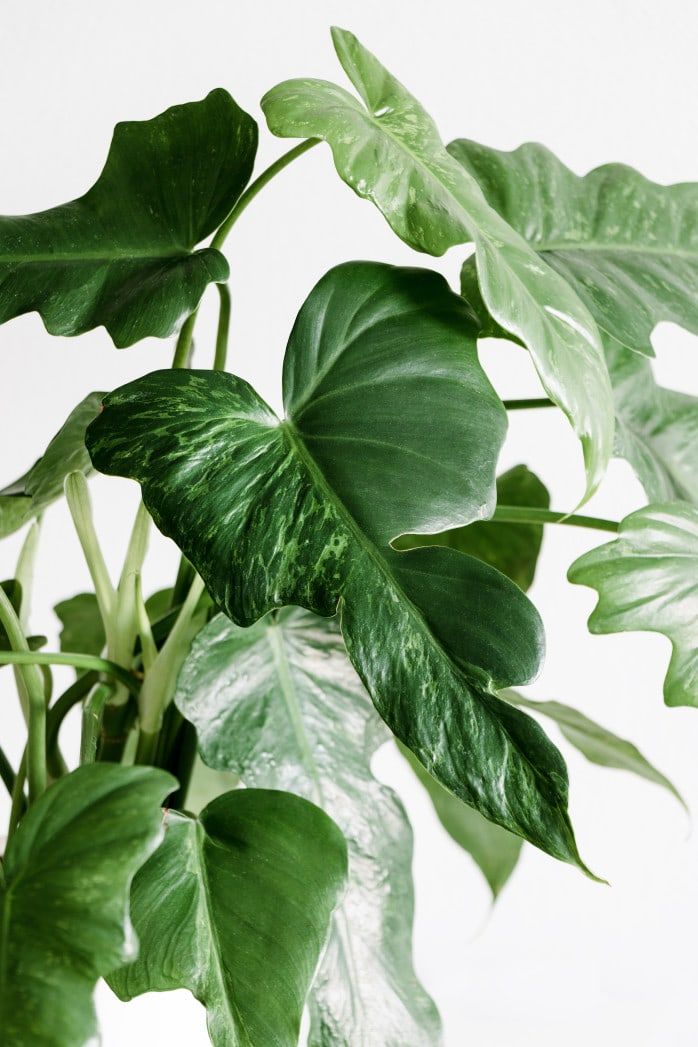Philodendrons are the true everyman of the houseplant kingdom, filling every niche from dainty hanging plants to gigantic upright tropicals. While there are thousands of philodendron plant varieties, the care and maintenance is relatively uncomplicated across the board. This complete guide covers everything you need to know to grow philo plants indoors and out, from light and water requirements to propagation and repotting tips and common pest and diseases to watch out for.
What are Philodendrons?
The name “philodendron” is rooted in Greek. The word “philo” means love, and “dendron” means tree, so the plant's name translates to “tree lover," inspired by the tendency of philodendrons to wrap themselves around trees in the wild and outdoors. Vining varieties of philodendron houseplants like to climb, as well, and will readily hug any structure within their reach.
Philodendron plants have some of the most beautiful foliage in the plant kingdom, with huge, glossy, bright green leaves. These plants have tropical origins, originating from forests in hot and humid parts of the Americas. If you live in a similar climate you can grow these plants outdoors, but they are more popular as indoor plants.
Philodendron Benefits
Philodendrons are extremely capable air purifiers, removing harmful toxins from the air in your home. They also can make breathing easier by increasing the oxygen levels in your home through their natural process of taking in carbon dioxide and emitting oxygen. As a result of helping you breathe easier, they also make you sleep better.
Philodendrons also release moisture vapor into the air, helping individuals with respiratory issues, decreasing skin dryness, and humidifying homes full of dry air.
Plants, in general, boost your mood so not only will you physically benefit from your philodendron plant, but also mentally. Just seeing greenery makes humans happier, and taking care of a plant gives us a sense of fulfillment.
Types of Philodendron
The hundreds of philodendron species can be broken into two house plant varieties: vining and non-climbing varieties. Vining philodendrons can and want to climb up support structures and thrive in hanging baskets, while nonclimbing philos are perfectly happy to grow upright in a container.
Velvet-Leaf Philodendron
The leaves of this variety (shown left) are soft as velvet! They are also heart-shaped, which adds to their charm. Making the foliage even more interesting is its iridescent quality that can make it look dark green, light green, or bronze depending on the lighting you are viewing it under. This is a vining variety, so it does best in hanging baskets that are exposed to indirect sunlight.
Green Heartleaf Philodendron
This philodendron variety has pronounced heart-shaped leaves that are a rich, dark green color that looks elegant and romantic cascading out of a hanging basket. You don’t just have to limit this variety to hanging baskets though, it can also be grown as a climbing plant. Green heartleaf philodendron likes low light and lots of humidity which makes bathrooms the ideal climate for them. A healthy plant can grow foot-long leaves and 30-foot vines!
Blushing Philodendron
This gorgeous philodendron's leaves blush with a unique reddish-purple color on the underside. The leaves’ topsides are a glossy, dark green color that works well in contrast with the color underneath. The leaves are shaped like arrowheads and are notably large. This variety looks stunning trailing out of hanging baskets or climbing structures.
Moonlight Philodendron
The moonlight philodendron is a hybrid, non-climbing variety. It has lime-green leaves that start out a yellowish color and turn darker and greener with age. These electric leaves can brighten up dark spaces, hence the plant’s name. They also look great perched on shaded windowsills. If you are keeping the plant on a sill, eastern and western windows are ideally positioned because if the plant doesn’t get enough sun it can lose some of its vibrant coloring, but too much sun could scorch it.
Philodendron Xanadu
Our first non-climbing variety on this list, the Xanadu is an excellent, upright-growing option. It has leaves with an unusual, split shape and deep lobes and it tends to grow in dense clumps. This philodendron can grow to be as tall as 3 feet and spread as far as 6 feet outdoors. Don’t worry if you are growing indoors, it’s not going to take over your living room, this varieties growth is limited by its pot’s size. Xanadu plants prefer bright light and make awesome floor plants.
Philodendron Brasil
This new cultivar is a variegated, thinner-leaved variety that grows readily in medium indirect sunlight and boasts lemon-lime heart-shaped foliage. If you've seen a gorgeous photo of a philo on Instagram lately, it was probably this one. Prized for its easy care and vibrant greens, and its propensity to grow rapidly and trail abundantly, it's a sure winner for the new plant parent or experienced indoor gardener alike.
8-inch Philodendron Brasil in Custom Ecopot
Philodendron Brasil is incredibly forgiving and will tolerate all kinds of neglect including low light, poor soil, and inconsistent watering. This is a great first-time houseplant or gift for anyone who wants to enjoy the natural beauty of plants without a lot of maintenance.
Philodendron Propagation
If you don’t feel like buying a philodendron and know a friend who has one, which you definitely do because these house plants are so common, you can easily propagate a new plant through cuttings.
Using a pair of clean, sharp scissors or pruners snip off a stem cutting that is at least 4 inches long. Remove some of the lower leaves near the cut and apply rooting hormone to it.
If the whole point of propagating for you was not having to pay for a plant, and you want to keep this operation as low cost as possible, you don’t have to use rooting hormone, but keep in mind that it does increase your chances of success.
After internally agonizing over-committing to thriftiness or increased success chances, place the stem cutting in a glass of water, cut side down. Regularly change the water, especially when it gets murky.
A couple of weeks later when the plant has established some roots you can plant it in potting soil in a large container.
Philodendron Growth Rate
Philodendron plants are extremely fast growers, growing to be as long as 8 feet and leaves as big as 3 feet across. These plants quite literally swallow trees in the wild, so they will definitely outgrow the handmade macrame hanger you balanced them on. They won’t swallow your house though because their growth indoors is slowed down quite a bit.
However, if you live in USDA Plant Hardiness Zones 9 - 11 you can grow them outdoors and really see how big they can get.
Common Problems for These Plants
Philodendrons are very easy to care for so you shouldn’t run into too many problems. Below are some of the issues you may encounter while growing your philodendron.
Pests
Philodendrons can be latched onto by indoor pests like mealybugs, aphids, and spider mites, however, using insecticidal soap, cotton swabs, and rubbing alcohol you can easily get rid of them.
Light
Listen to your plant and move its positioning according to what it is telling you. If your plant’s leaves start to turn yellow, that means it’s receiving too much light. If it turns leggy, that means it is not getting enough. Direct sunlight will burn the leaves of most philo varieties, so be sure your indoor light is filtered through a screen or sheer curtain if you're seeing bleached, dry patches on your plant's leaves.
Stunted Growth
If your plant's growth begins to slow and its leaves become pale or small that means that it needs more fertilizer. You can remedy the problem by quickly adjusting the amount you are giving it while keeping in mind that you should be regularly applying fertilizer during the growing season.
Philodendron Plant Toxicity
The stems and leaves of philodendron, due to their high calcium oxalate levels, can be toxic to humans and pets if consumed. The negative reaction stems from the calcium oxalate crystals agitating the mouth, throat, and gastrointestinal tract, causing a burning sensation in the mouth and throat, nausea, vomiting, and diarrhea. Do not put the plant in a position that pets or children may have access to it to eat it.
Identification Issues: Philodendron vs. Pothos
People regularly misidentify their philodendrons because they're frequently confused with pothos plants. The problem is so bad that owners sometimes go years without knowing their plant’s true identity, and retailers even frequently mess up labeling the two. To help you tell the difference, keep in mind that philodendron leaves are thicker and glossier with a velvety texture, and that the aerial roots of philodendrons are clustered, while pothos have solitary ones.
Ultimate Shelfie Set
Potted in 7-inch custom planters. Thrives in low to medium light. Marble Green Pothos and Philodendron Green are quick growing, low maintenance trailing plants that'll turn your bedroom or office into a tropical oasis in no time.
How to Grow a Philodendron Plant Outside
To grow a philodendron outside you have to live in USDA Plant Hardiness Zones 9 - 11 in climates that regularly do not dip below 55 F at night. If you don’t live in this zone, it’s a good idea to bring your philodendron outside every once in a while when the weather heats up in your area, leaving it in a shaded spot. Philodendrons appreciate the outdoor exposure, which boosts their growth, and they aren’t finicky about being moved like other plants.
Plant your philodendron outside in a place with indirect or filtered light to avoid sunburned leaves. The soil it is planted in should be consistently moist, well-drained, and rich in organic matter. Feed your plant balanced granular fertilizer every few months.
Jobe’s Organics All-Purpose Granular Fertilizer
Organic granular fertilizer. Fast acting fertilizer for flowers, vegetables, shrubs, trees & plants. OMRI listed for organic gardening by USDA. Contains Jobe’s Biozomethe proprietary microorganism archaea that aggressively breaks down material for faster results.
Be careful when handling your plant outside, making sure you always wear gloves so your skin doesn’t come into contact with its toxic sap. Outdoor philodendrons need regular pruning to promote healthy growth, trimming away dead and dying parts.
How to Grow a Philodendron Plant Indoors
Step One: Plant Your Philodendron
If you are growing a climbing variety hang it on a plant stand while a non-climbing variety can sit on your window sill or floor. The perfect lighting for philodendron plants is bright, dappled, or indirect light. Your plant should be near light but it should never actually touch it.
Plant your philodendron in nutrient-rich, loose potting soil. It should have lots of organic matter but also the
capabilities to drain well. Your container shouldn’t be more than a couple inches bigger than the root ball to prevent the soil from retaining too much water.
Step Two: Water Your Philodendron
Stick your finger into the top inch of soil. If it’s dry, water your plant. If not, wait. However, in the winter you should allow your plant’s soil to dry out a bit more, checking the top 2 inches of soil. Your soil should be moist after waterings but not soaked to the point of standing water.
Your philodendron is a tropical plant so it needs humidity. You can provide humidity through using a pebble water tray, placing a bowl of water next to your plant on the windowsill, or through regularly misting it every 2 days during the growing season and every 3 – 4 days during the winter.
Pro Tip: Take your plant outdoors at least once a year, if the weather is suitable, to a shady spot to flush the soil and clean the leaves.
Step Three: Care for Your Philodendron
If your climbing variety grows aerial roots then push them into the soil to promote bushy growth or wind them around nearby structures to help them climb. Fertilize your philodendron regularly. You can use slow-release fertilizer pellets once at the beginning of the growing season or liquid fertilizer every 2 weeks during the growing season. Fertilizer will keep your plant healthy and make its leaves grow bigger. Philodendrons are extremely fast growers. To keep their growth at bay, you can prune back new growth but eventually, annually, you will have to repot them.
Conclusion
Hopefully, you have had your fill of philodendrons. They are very resilient plants that are extremely easy and rewarding to grow due to their gorgeous green foliage and rapid growth rate.
I hope you enjoyed this article! If you found it helpful, be sure to share it and comment below with any growing questions!

